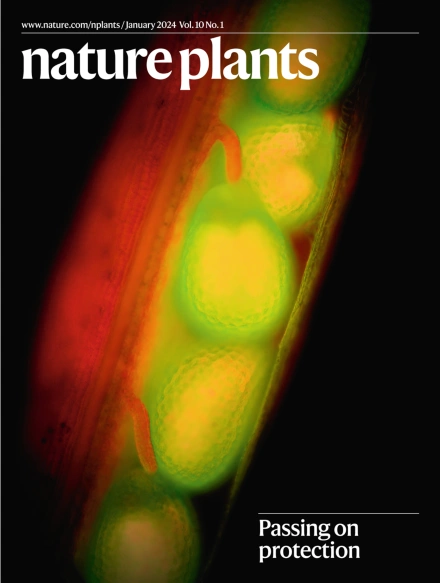Hordeum i -基因组序列提供了植物如何适应盐碱胁迫的见解
IF 15.8
1区 生物学
Q1 PLANT SCIENCES
引用次数: 0
摘要
了解有价值作物野生近缘的遗传基础,有助于扩大作物多样性和提高产量。Hordeum i -基因组CWRs的第一个参考基因组揭示了对盐碱胁迫的独特进化适应,突出了它们在小麦和大麦育种计划中的潜在应用。本文章由计算机程序翻译,如有差异,请以英文原文为准。


A Hordeum I-genome sequence provides insight into how plants adapt to salt–alkali stress
Understanding the genetic basis of valuable crop wild relatives (CWRs) could enable their use in expanding crop diversity and enhancing production. The first reference genome for Hordeum I-genome CWRs unravels unique evolutionary adaptations to salt–alkali stress, highlighting their potential applications in wheat and barley breeding programmes.
求助全文
通过发布文献求助,成功后即可免费获取论文全文。
去求助
来源期刊

Nature Plants
PLANT SCIENCES-
CiteScore
25.30
自引率
2.20%
发文量
196
期刊介绍:
Nature Plants is an online-only, monthly journal publishing the best research on plants — from their evolution, development, metabolism and environmental interactions to their societal significance.
 求助内容:
求助内容: 应助结果提醒方式:
应助结果提醒方式:


